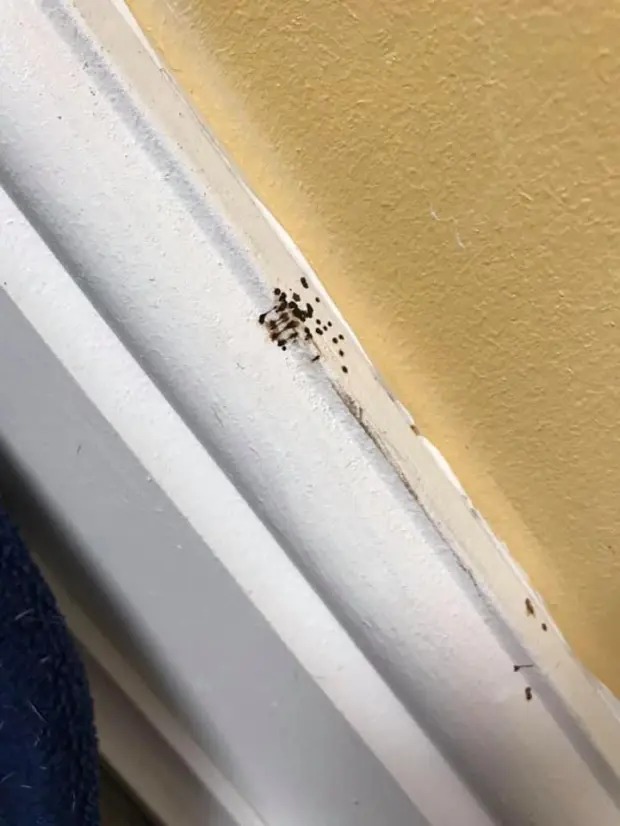ADVERTISEMENT
**4. Mould or Mildew**
In damp conditions, mold and mildew can develop on walls, ceilings, or floors. While mold is often green or black, certain types can appear as small black dots. These are usually accompanied by a musty odor and may indicate a moisture problem.
**5. Ink or Paint Splatter**
Accidental splashes of ink or paint can result in small black dots on various surfaces. These are typically easy to identify due to their uniform appearance and location near the source of the spill.
**Steps to Address the Issue**
Once the source of the black dots has been identified, appropriate measures can be taken to address the issue.
**1. Cleaning and Removal**
– **Spider Droppings**: Clean affected areas with a mild detergent solution and a soft cloth. For stubborn stains, a mixture of vinegar and water can be effective.
– **Booklice**: Reduce humidity levels by using dehumidifiers and improving ventilation. Cleaning walls with soap and water can help remove visible spots. citeturn0search8
– **Fly Droppings**: Regularly clean areas where flies are prevalent. Ensure that food is stored properly and waste bins are sealed.
– **Mould or Mildew**: Address moisture issues by repairing leaks and enhancing ventilation. Use mold-killing solutions to clean affected areas.
– **Ink or Paint Splatter**: Gently clean the area with appropriate cleaners, taking care not to damage the surface.
**2. Prevention Strategies**
– **Regular Cleaning**: Maintain cleanliness by routinely cleaning surfaces, especially in areas prone to spills or pests.
– **Moisture Control**: Keep humidity levels in check to prevent mold growth and discourage pests like booklice.
– **Pest Control**: Implement measures such as sealing entry points, using traps, or consulting pest control professionals if necessary.
– **Proper Waste Management**: Dispose of garbage regularly and use sealed containers to deter pests.
**3. When to Seek Professional Assistance**
If the issue persists despite your efforts, it may be time to consult professionals. Persistent mold growth, ongoing pest infestations, or recurring stains could indicate underlying problems that require expert intervention.
**Conclusion**
Encountering small black dots in your kitchen can be unsettling, but understanding their potential causes and knowing how to address them can alleviate concerns. Whether it’s spider droppings, booklice, fly waste, mold, or accidental splashes, each source requires specific attention. By identifying the cause, implementing targeted cleaning and prevention strategies, and seeking professional help when necessary, you can maintain a clean and healthy kitchen environment.
